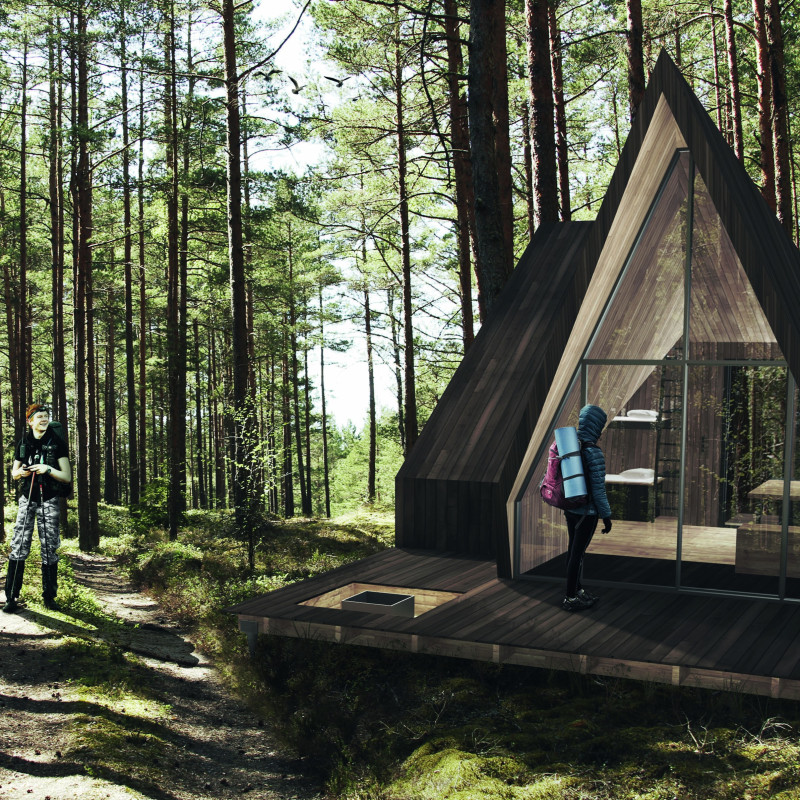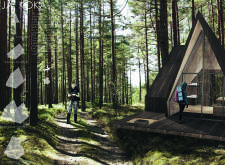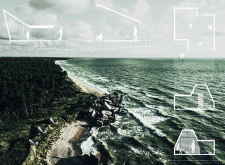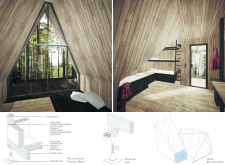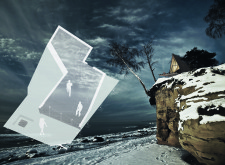5 key facts about this project
The overall design represents a harmonious convergence of spaces that serve multiple purposes, reflecting careful consideration of the needs of its users. The primary function of the building is to serve as a multi-use facility that accommodates [insert specific functions such as offices, community spaces, or retail areas], making it a crucial node in the urban fabric. This versatility allows for a dynamic interaction among different user groups, fostering a sense of community and collective ownership of the space.
Key architectural elements are pivotal to the overall character of the project. The façade features a combination of materials, notably concrete, glass, and wood, each chosen not only for its aesthetic appeal but also for its environmental performance. The concrete structure provides durability, while the expansive glass windows allow for natural light to permeate the interior, reducing reliance on artificial lighting and promoting energy efficiency. The use of wood introduces warmth and a tactile quality that balances the more industrial aspects of the design, inviting users to engage with the space on a more personal level.
One notable aspect of the project is its attention to sustainable practices. Incorporating a green roof and efficient water management systems showcases a commitment to environmental stewardship. These features not only contribute to the ecological efficiency of the building but also provide green spaces for users, enhancing their overall experience within the urban setting. The orientation of the project maximizes passive solar energy, further reducing its carbon footprint and demonstrating a keen understanding of the local climate.
The interior spaces of the building are designed to promote flexibility and adaptability. Open floor plans allow for easy reconfiguration for various events and uses, catering to both private gatherings and larger community functions. Natural materials are used throughout, echoing the exterior's material choices and creating a cohesive aesthetic. Strategic placement of windows facilitates cross-ventilation and illuminates the spaces, reinforcing a connection to the outdoors.
The unique approach taken in this project lies in its thoughtful response to the surrounding environment and community. Rather than imposing on the landscape, the design complements the existing architecture and respects the historical context of the area. Elements such as landscaped walkways and communal outdoor areas encourage pedestrian interaction and promote an active lifestyle, aligning with contemporary urban planning ideals.
The project also emphasizes inclusivity through the thoughtful design of entrances and circulation paths that accommodate all users, including those with disabilities. This attention to accessibility highlights an understanding of the diverse needs within the community, ensuring that the building serves as a welcoming space for everyone.
This design exemplifies how architecture can contribute positively to urban life by crafting spaces that are not only functional but also enriching. Its careful consideration of materiality, sustainability, and community engagement marks it as an important addition to the architectural discourse. Readers interested in further exploring the nuances of this project are encouraged to delve into the architectural plans, sections, and designs that highlight the innovative ideas behind this significant example of modern architecture. Engaging with these elements will provide deeper insights into the thoughtful considerations that have shaped this project, underscoring the relevance of architecture in fostering community and sustainable growth.


